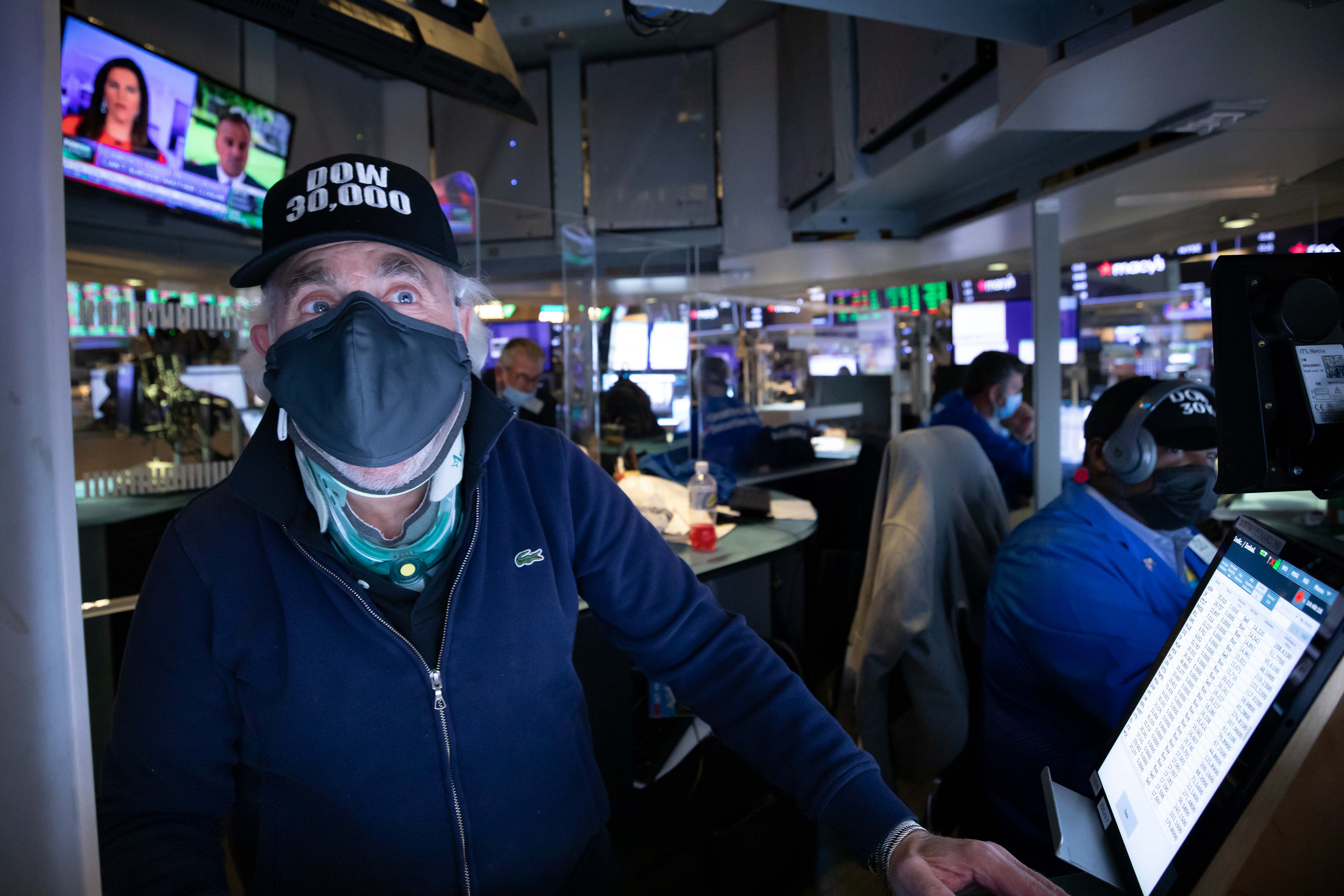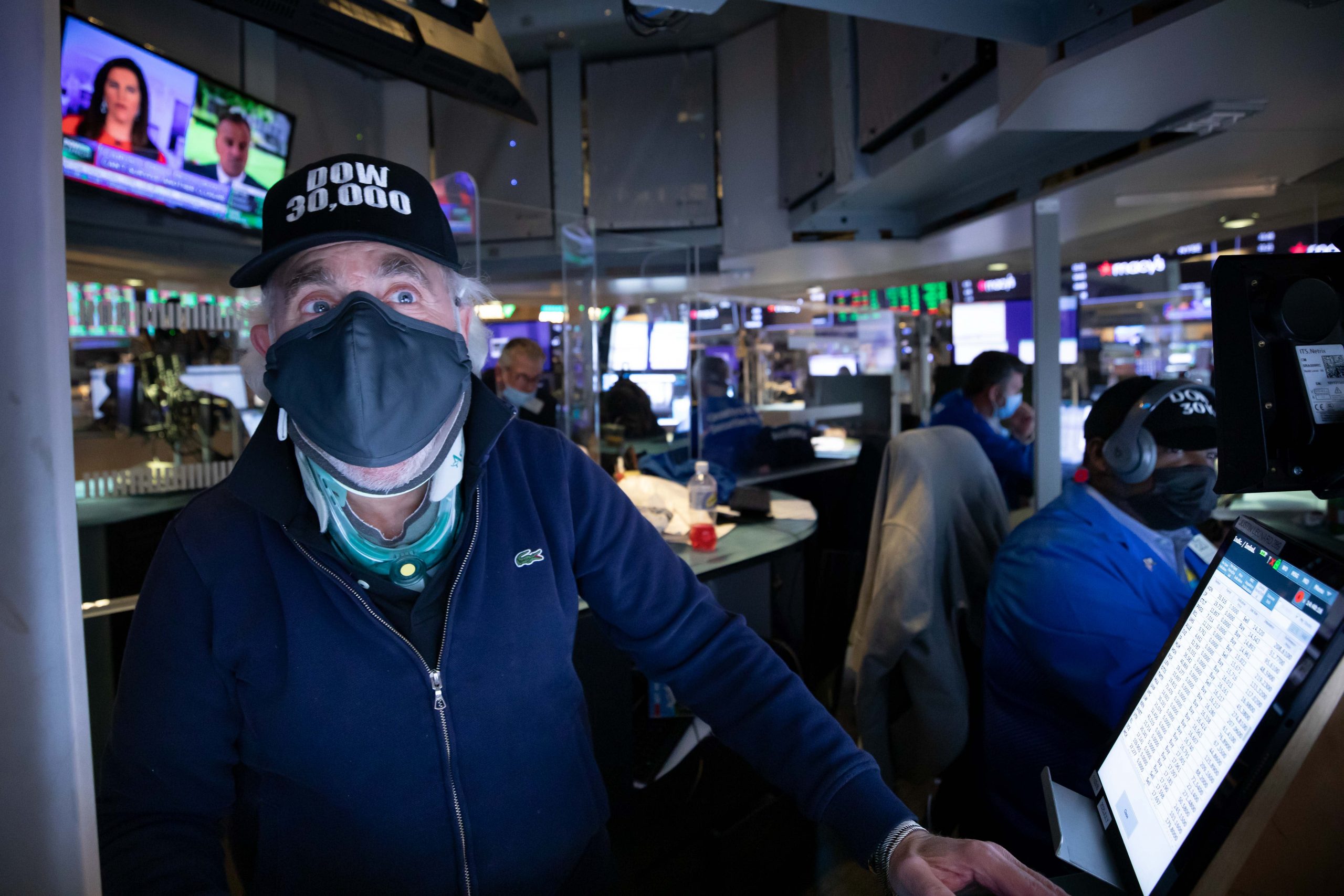
Traders work on the floor of the NYSE in New York.
NYSE
Options trading is the new sports betting.
Talk about unintended consequences.
The stay-at-home requirement created by Covid-19 has spawned a huge sub-industry in options trading in tandem with an increase in equities trading that shows no signs of letting up.
Trading in equity options hit new highs in November, continuing a trend that began earlier in the year.
Equity option trading is 50% above last year’s levels year to date on all the options platforms.
Equity options (volume)
- Nasdaq 49%
- CBOE 51%
- ICE 58%
Source: Piper Sandler
“The public is embracing options in a truly unprecedented manner, as you can see from the volumes,” Steve Sosnick from Interactive Brokers told me. “I attribute some of the popularity to the lockdown … People were stuck at home, many with $1,200 checks or rent/loan moratoria and no sports to watch or bet on. So they went to the stock market, then realized that options have similar payoff structures to sports bets.”
That analogy to sports betting is deliberate: “The psychology [of sports betting versus betting on stocks] is very similar. With sports gambling, I stand to make some percentage of the money. It’s the same thing with stocks and options, but with stocks and options there is thousands of bets you can make every day, and when you are in an up market like we have been experiencing, you can come to believe that the odds really are in your favor.”
Kyle Robinson, who tracks trading activity at Piper Sandler, noted that much of the trading activity has occurred in out-of-the-money options that are approaching expiration, with much of it day trading: buying in the morning, and getting out in the afternoon.
Why that type of activity? “They are trading options because many don’t have the money to buy a lot of the stocks,” he told me. “You can buy options for a fraction of the price, and if you have options that move the same percent as the underlying stock, you can make money as if you owned the stock.”
Sosnick noted that, far from acting irrationally, many day traders are correct to target options trading.
“How else are you going to buy an Amazon or a Tesla? Buying options makes some sense for people who want to participate in those kinds of trades.”
Buying out of the money calls, he noted, have a limited outlay, so you can only lose what you put in. “You buy a call for a dollar, you can only lose a dollar.” As for why many are doing simple day trading, in during the morning and out by the close, Sosnick speculated that, “They may be poorly capitalized. They may want to be able to sleep at night. It may be the only strategy they know.”
Also helping the day trading phenomenon: zero commissions on many trades, and the presence of social media and chat rooms that are full of discussions on high profile names.
Another major factor: the presence of educational materials that are teaching traders how to trade options.
“We have seen no dropoff in the interest in education material on our website,” JJ Kinahan, Chief Market Strategist at TD Ameritrade. “The most watched videos on our site are first, stock fundamentals, and second, getting started with options.” He noted that viewing of that material remains three times higher than it was a year ago.
Equity trading also way up
The increase in options trading is happening in tandem with a similar increase in equity trading. At Fidelity, trading volume in the third quarter is up 97% from a year ago, for example.
At Interactive Brokers, daily average revenue trades (DARTs) for November were up 174% over the same period last year, according to Rich Repetto at Piper Sandler. They also added 29,000 new accounts.
“We are raising our 4Q20 EPS estimate due to stronger than anticipated trading, continued account growth and strong margin balance and customer equity growth,” Repetto wrote in a recent note to clients.
Robinson noted that he is not seeing the same dramatic increase in trading in futures contracts, which are used more by professionals as hedging vehicles, or in index options.
How long will this elevated trading continue?
Amidst all this bullish call buying, what could go wrong? Sosnick told me the biggest risk was simple mean reversion: “You can get into a losing streak. It doesn’t take much if you are buying risky calls to lose money after a few days or weeks.”
Sosnick also speculated that all this day trading may have a limited shelf life, regardless of market trends.
“I wonder how much of this is tied to the fact that many people haven’t had to pay student loans, and next month they may have to,” he said. “The average student loan payment is $400, if you use that to put in the market, and I have to start paying that back, it is money that could flow out of the markets.”
Robinson agreed. “We don’t expect these levels to persist,” Robinson told me. “When the pandemic is over, those staying at home will go back to work. When the vaccine comes out, volatility will likely go down, that will make it more difficult to day trade.”
Sosnick agreed that volatility could indeed drop if the enormous amount of call buying evaporated. He noted that one of the reasons the CBOE Volatility Index (VIX) has been stuck at the elevated 21 level despite a big rally is that the huge amount of call buyers has inflated implied volatility.
How many will stick around for the next correction?
The ultimate test to see whether these new traders stick around will be the next correction, Sosnick told me. “People are smart, and they are trying to get educated. But the best education for traders is a full market cycle, and we haven’t seen that yet. Many of these traders only came in after March, so they haven’t seen a full cycle.”
Still, Sosnick doesn’t blame the younger crowd for having fun with stocks and options while it lasts: “And betting on NASDAQ was much more likely to pay off than the Jets,” he quipped.
Subscribe to CNBC PRO for exclusive insights and analysis, and live business day programming from around the world.


 Signal2forex.com - Best Forex robots and signals
Signal2forex.com - Best Forex robots and signals




